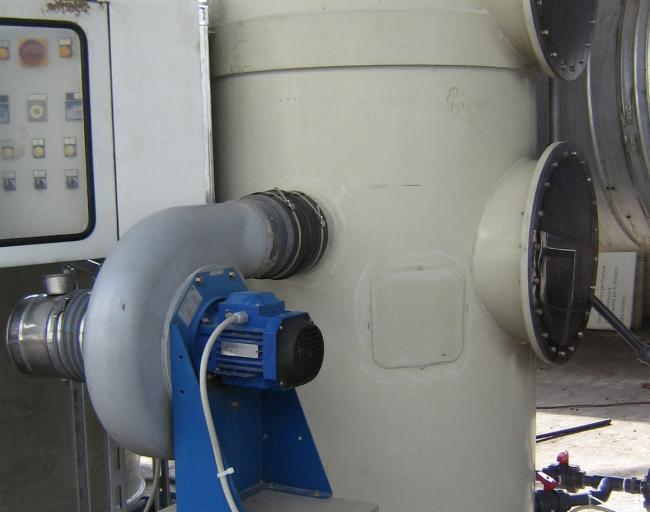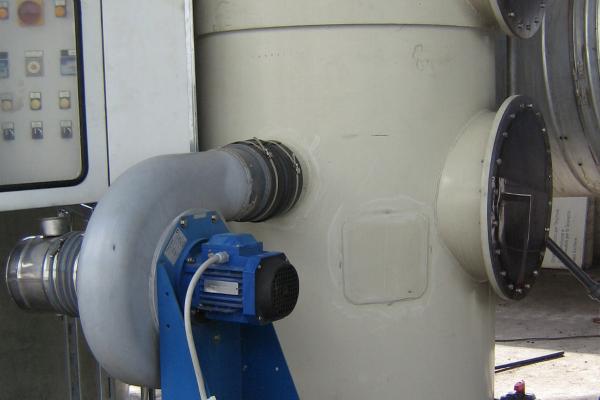Prototype to reduce ammonia emissions from pigs houses with recovery as fertilizers

The GO aim is to develop a prototype that captures ammonia and dusts from pigs houses to reduce emissions into the atmosphere, while promoting animal welfare and workers health.
The system draws air from the rooms and removes ammonia and dust capturing them in a solution of ammonium sulphate. This can be exploited by mixing it with the solid fraction from the slurry solid-liquid separation, in order to reduce its ammonia and greenhouse gasesemissions and to increase its nitrogen content in the perspective of "nutrient recovery".
The experimental work will be conducted with a multi-level approach: the setup of the treatment prototype system Ammonia Washing Machine (Action 1); monitoring of the treatment system efficiency to reduce ammonia and dust (Action 2) and the monitoring of airquality inside the rooms for the workers health and work safety (Action 3). It will also be analyzed the ammonia emissions and GHG reduction from the storage exploiting the solution produced by the treatment system (Action 4) and finally the cost-benefit assessment and the development potential of the technology resulting from the plane (Action 5).
Ammonia emissions into the atmosphere from the intensive pig housing is due to surfaces fouling caused by feces and urine and the presence of slurry under the slatted floor. The GO aim is to develop a prototype that captures ammonia and dusts from pigs houses to reduce emissions to the atmosphere, while promoting animal welfare and workers health. The system draws air from the rooms and remove ammonia and dust capturing them in a solution of ammonium sulphate. This can be exploited by mixing it with the solid fraction from theslurry solid-liquid separation, in order to reduce its ammonia and greenhouse gases emissions and to increase its nitrogen content in the perspective of "nutrient recovery".
Results expected are the improve of air quality inside the room where the prototype is installed and the quantification of ammonia emissions avoided; the characterization for fertilizers purposes and quantification of the reduction of the ammonia, nitrous oxide and methane emissions from heap storage of the separated solid fraction from pig slurry treated with the ammonium sulphate solution produced by the prototype. Finally, the evaluation of cost-benefits from the new technology application analyzing its impact on the production cost per kg of live pig weight.
Visita virtuale e Convegno finale GOI Ammonia Washing Machine
Emilia-Romagna, Emissioni di inquinanti e gas serra, I Gruppi Operativi, PEI-AGRI| Titolo/Descrizione | Url | Tipologia |
|---|---|---|
|
Sito web del progetto
|
Sito web
|
|
|
La descrizione delle attività newsletter n. 1 - Luglio 2019
|
Materiali utili
|
|
|
Test sul solido separato in fase di stoccaggio
|
Materiali utili
|
|
|
Ammonia Washing Machine su Suinicoltura
|
Materiali utili
|
|
|
Test presso l'Azienda Sant'Anna di Formigine (MO)
|
Materiali utili
|
|
|
I risultati delle prove in sale di ingrasso nella Newsletter 2
|
Materiali utili
|
|
|
Come funziona Ammonia Washing Machine
|
Materiali utili
|
|
|
Con una "lavatrice" ti pulisco l'aria delle porcilaie
|
Materiali utili
|
|
|
Opuscolo finale Ammonia Washing Machine
|
Materiali utili
|
|
|
Cartellina Ammonia Washing Machine
|
Materiali utili
|
|
|
Rollup Ammonia Washing Machine 952
|
Materiali utili
|
|
|
Relazione tecnica finale
|
Materiali utili
|
